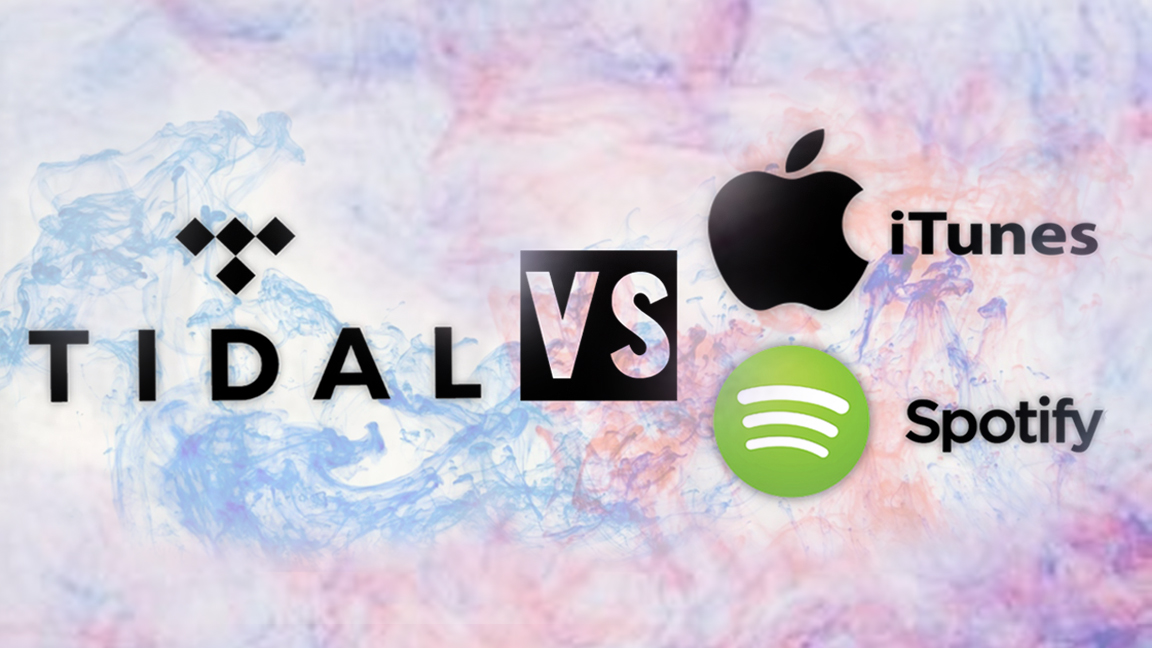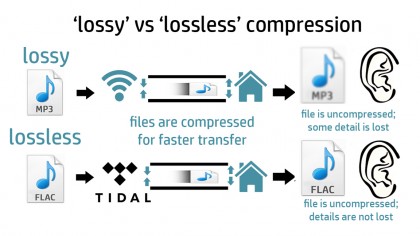This is why Tidal sounds better than iTunes or Spotify
Explaining Jay Z's secret weapon in the music streaming wars

Since its acquisition and relaunch in late March by rapper/entrepreneur/media mogul Jay Z, on-demand music streaming service Tidal has made waves, pun unintended.
From big-name music artists taking to the Twitterverse with the hashtag #TIDALforALL, to landing the ever-elusive streaming privileges of one Taylor Swift, the "Hi-Fi" (or high fidelity) music service looks to be taking no prisoners in the on-demand music space.
It's not all pitch-perfect for the new streaming service, however. In the months since launching, it hasn't gained the traction its management team expected. It's fallen out of the top 700 iTunes apps, leading some to adopt the hashtag #TIDALforNOONE.
But, even after considering all the buzz (both good and bad), Tidal doesn't turn heads quite like it turns ears.
The service's music quality well surpasses that of its competitors, such as Spotify, iTunes, Pandora and Songza. So, what exactly is Tidal, and how does it get its impeccable sound?
How does Tidal work?
If you've used Spotify before, you'd probably be able to catch on to Tidal in seconds. As a music streaming service, Tidal is almost identical to its rivals. After logging into either Tidal's browser-based client or smartphone app, you're granted access to over 25 million tracks and 75,000 high-definition music videos, along with a user interface and custom playlist feature Spotify users will find familiar.
Following its recent rebranding, Tidal also flaunts itself as "the world's first artist-owned streaming service" by offering musician-produced content directly to the service, such as exclusive singles, video performances and even playlists curated by 'Hova himself.
Get daily insight, inspiration and deals in your inbox
Sign up for breaking news, reviews, opinion, top tech deals, and more.
That all said, the ace up Tidal's sleeve is its Hi-Fi membership, which brings audiophiles still clinging to their CDs the highest quality recordings currently streaming over the internet.
What does 'Hi-Fi' mean?

Tidal's Hi-Fi offering allows the service to stream crystal-clear audio to users' headphones or speakers that surpass the usual quality offered by competing services.
Spotify and Google Play stream music to devices at a rate of up to 320 kilobytes per second (kbps), a number that may decrease depending on connection strength or if you are using a mobile device. On the other hand, Tidal's Hi-Fi subscription streams music at 1,411 kbps, well over four times as much data per second. This makes downloading and streaming its music more bandwidth-intensive, but also allows Tidal to use the 'lossless' FLAC audio file format, granting users superior sound over the 'lossy' formats used by other services.
Lossy vs Lossless
FLAC, ALAC, WMA lossless – there are a lot of terms for lossless media, but the idea is always the same. Tidal uses FLAC – a file format like MP3 or WMA – to stream audio files from its servers to your ears. By contrast, other services use lossy formats, such as MP3 or OGG – the latter being the format of choice for Spotify.
The difference between lossless and lossy formats stems from what is lost after the files are received by the user and uncompressed.
Lossy formats are very good at compressing data to a small size, such as audio, video or images, so they can be easily transferred over the web via streaming, email or downloads. Lossy files, such as MP3s (for audio) and JPEG (for images), are common on websites, because they can load quickly without sucking up the user's time or data plan.
However, in doing this, these formats "simplify" parts of those files to make transfers easier, resulting in a lower quality sound or picture when retrieved on the other end.
Lossless formats, on the other hand, are able to recover all the data from their compressed files, meaning no loss in quality in the transfer. Typically, these files don't compress down to a size as small as their lossy brethren, making them more suitable for situations when the quality of the product matters more than the speed at which it downloads or the amount of memory it takes up.
This is how Tidal's Hi-Fi service, geared towards the more discerning music fan, claims to bring CD-quality music online.

Imagine packing a nice shirt for a trip. You need it to fit in a suitcase, because carrying it on a hanger would be too cumbersome. If you put it in an airtight bag and vacuumed all the air out, you could compress the shirt to a very manageable size, but the shirt may turn out slightly wrinkled when it's unpacked later.
Another option would be to gingerly fold it, which may take up more space than vacuum-sealing it, but it would be able to travel and come out virtually unchanged upon unpacking. In this scenario, the vacuum-sealing option is the lossy format, and the gentle folding option is lossless. Both allow the shirt to travel easily, but lossy favors efficiency where lossless prioritizes the original product.
Because of Tidal's ability to stream lossless files over a high bitrate, it claims to bring a richer, clearer sound than what other music streaming sites are currently able to put out. While the difference may not be noticeable coming from cheaper, utilitarian headphones, hardcore music fans may find hi-fi music streaming a more appealing way to put their home stereos to use.
While Tidal is not the first name in lossless music streaming, it has made a name for itself (thanks in no small part to the industry's biggest acts). It is entirely possible as competition heats up and audio quality becomes more in-demand, current services may up their game and offer high-fidelity sound. In the meantime, those who desire CD-quality music online have a wrinkle-free solution in Tidal.
Tidal Hi-Fi currently runs for $20/£20 a month, while those more interested in the quantity of songs over the quality can opt for Tidal Premium, a second-tier subscription that offers standard sound quality for $10/£10.
Are you able to hear the difference between lossy and lossless media? Head to test.tidalhifi.com to find out.
- Here are our picks for the best headphones around
